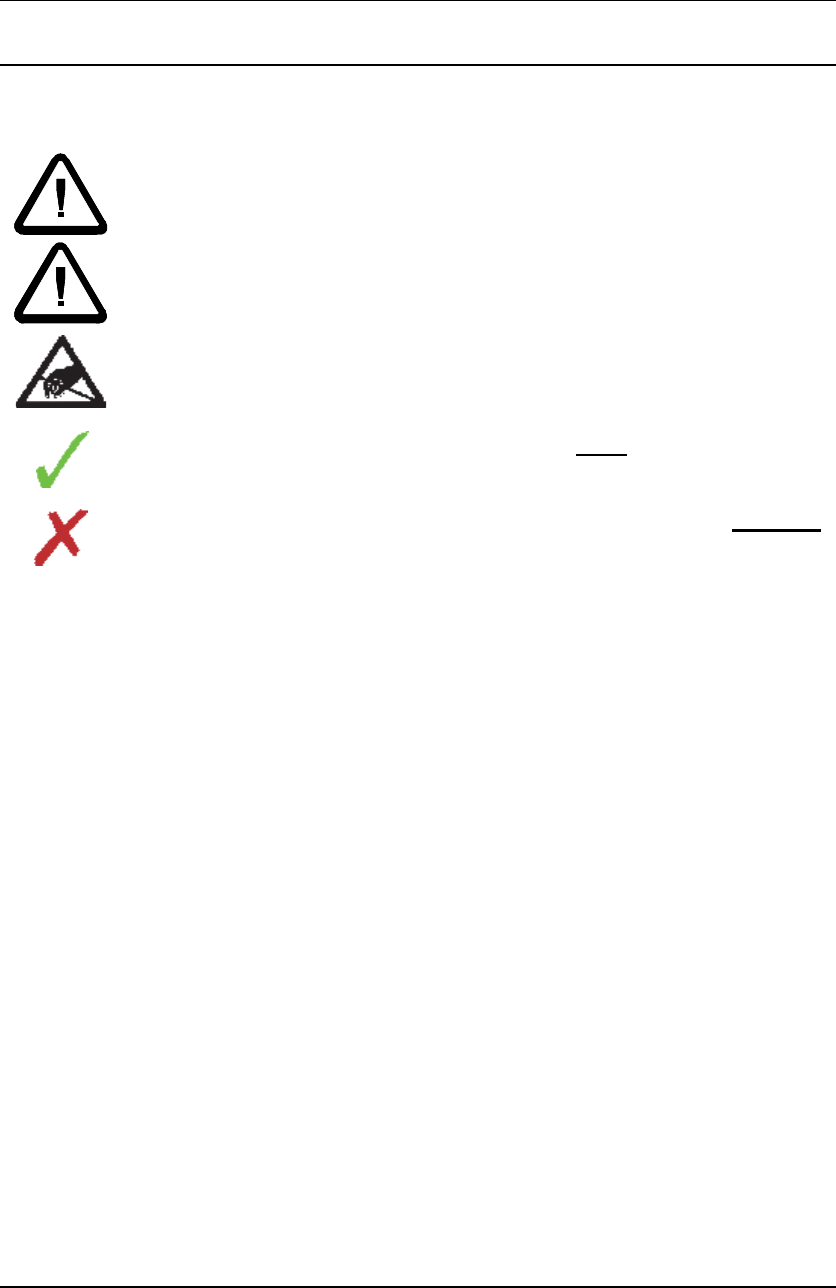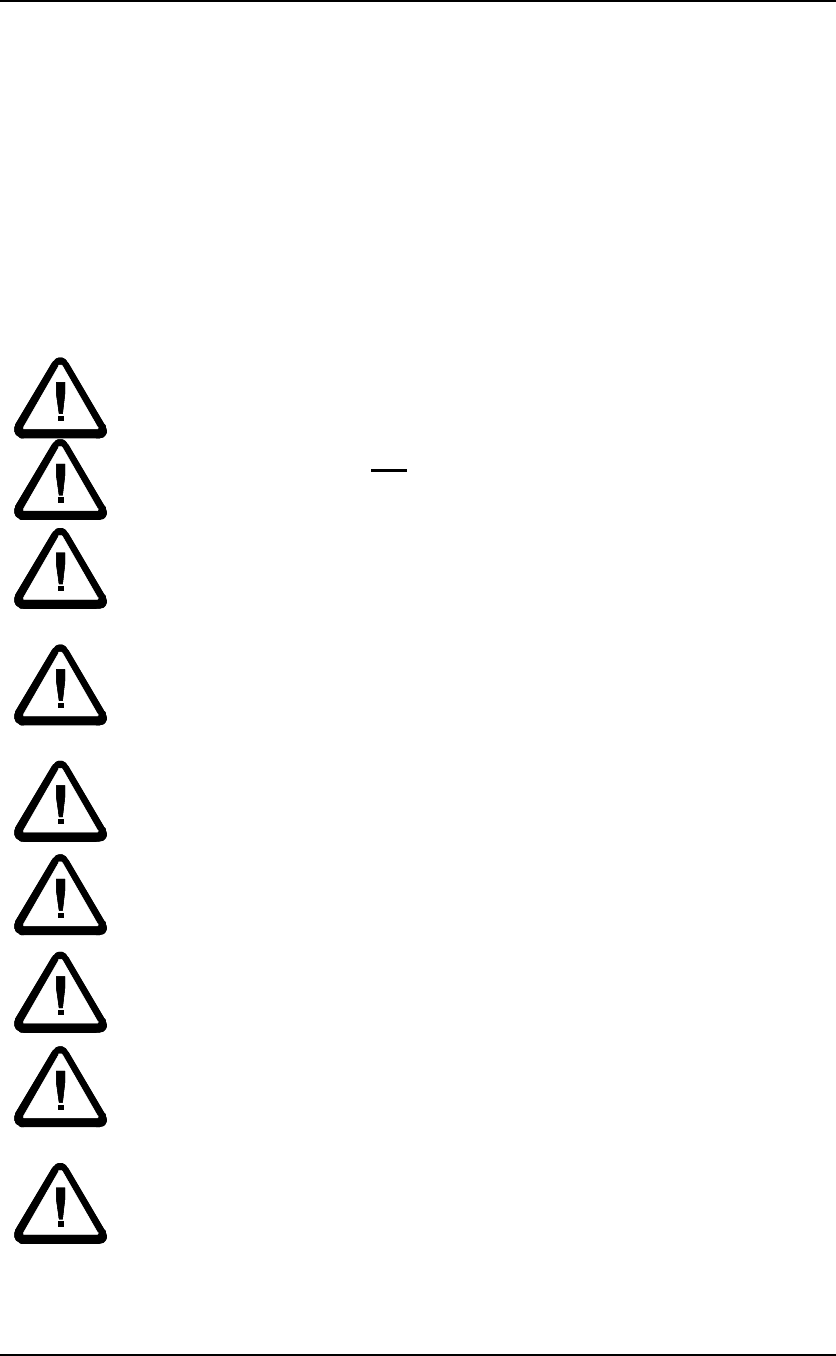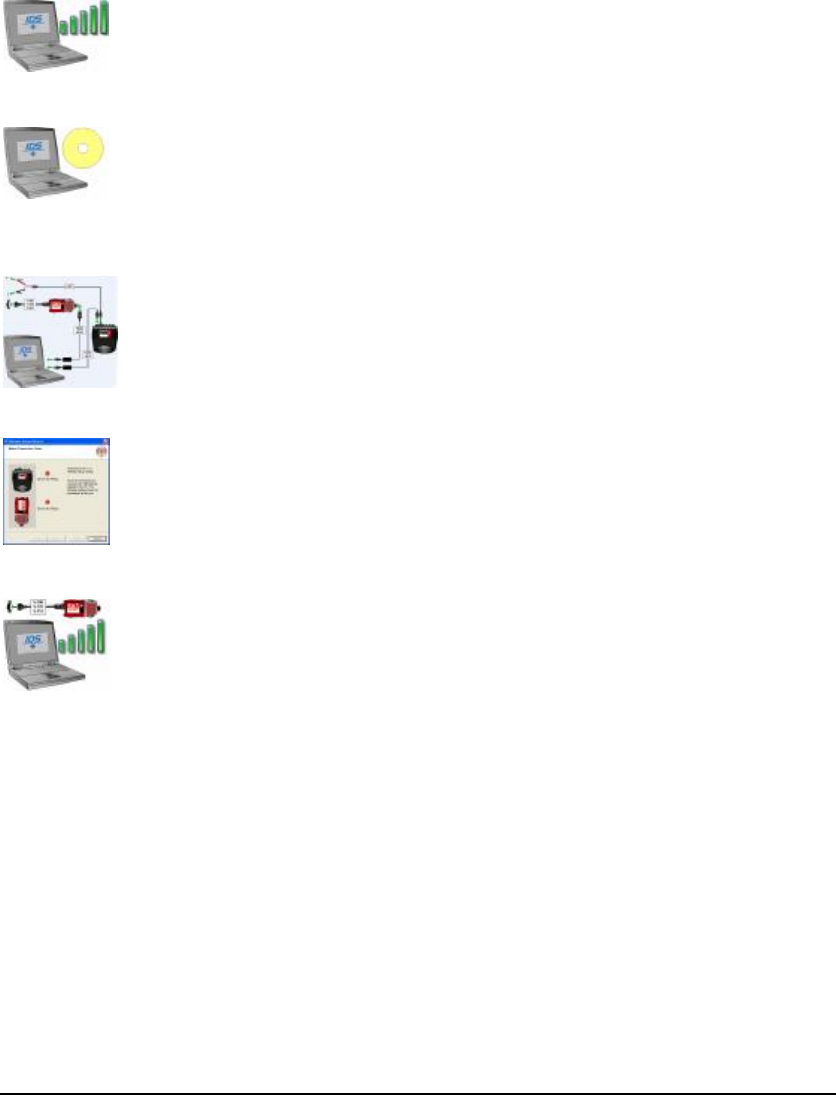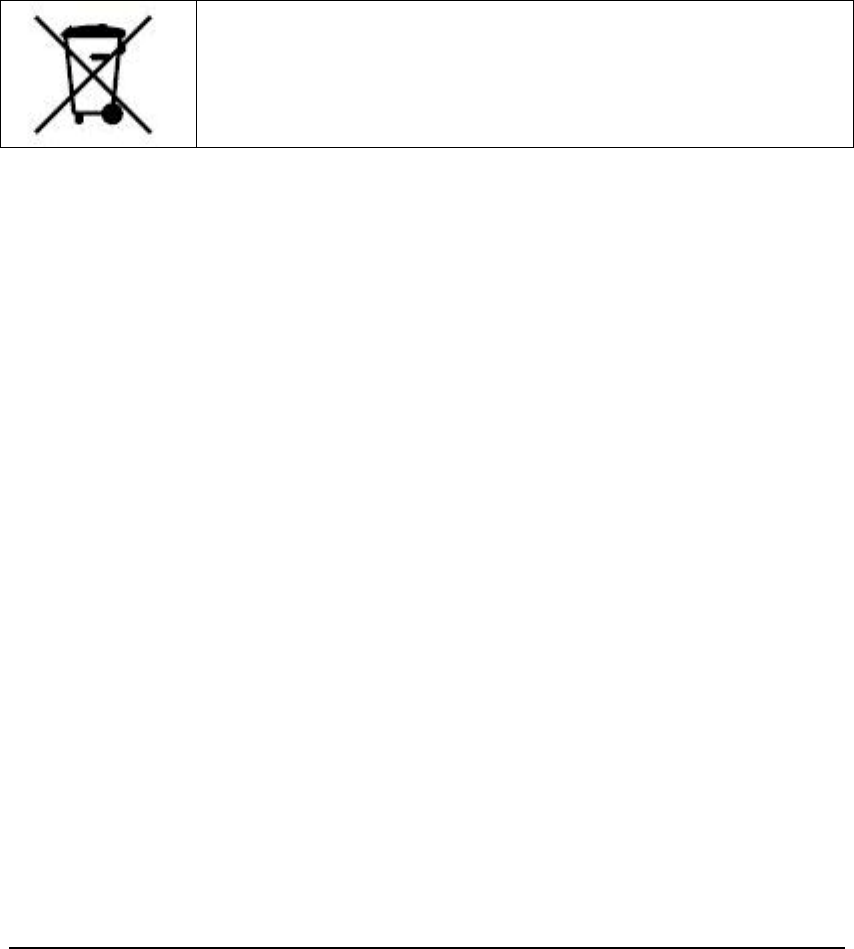Teradyne Diagnostic Solutions 35540121 Wireless Card for VCM and VMM User Manual
Teradyne Diagnostic Solutions Wireless Card for VCM and VMM Users Manual
Contents
- 1. User manual
- 2. Users Manual
Users Manual

Teradyne Diagnostic Solutions Ltd
©2007, Teradyne Diagnostic Solutions
Teradyne VxM RF Card Product Safety Notice Issue 1.0 Date:22/05/2007
Wireless Card for VCM and VMM /164-R9570
Copyright © 2007 Teradyne Diagnostic Solutions. All rights reserved.
Reproduction, transfer, distribution or storage as part or all of the contents in this document in any form
without the prior written permission of Teradyne Diagnostic Solutions is prohibited.
Teradyne Diagnostic Solutions reserves the right to make changes and improvements to any of the
products described in this document without prior notice.
Under no circumstances shall Teradyne Diagnostic Solutions be responsible for any loss of data or
income or any special, incidental, consequential or indirect damages howsoever caused.
The contents of this document are provided “as is”. Except as required by applicable law, no warranties
of any kind, either express or implied, including, but not limited to, the implied warranties of
merchantability and fitness for a particular purpose, are made in relation to the accuracy, reliability or
contents of this document.
Teradyne Diagnostic Solutions reserves the right to revise this document or withdraw it at any time
without prior notice.
Federal Communication Commission Interference Statement
This equipment has been tested and found to comply with the limits for a Class B digital
device, pursuant to Part 15 of the FCC Rules. These limits are designed to provide
reasonable protection against harmful interference in a residential installation. This
equipment generates, uses and can radiate radio frequency energy and, if not installed and
used in accordance with the instructions, may cause harmful interference to radio
communications. However, there is no guarantee that interference will not occur in a
particular installation. If this equipment does cause harmful interference to radio or television
reception, which can be determined by turning the equipment off and on, the user is
encouraged to try to correct the interference by one of the following measures:
- Reorient or relocate the receiving antenna.
- Increase the separation between the equipment and receiver.
- Connect the equipment into an outlet on a circuit different from that
to which the receiver is connected.
- Consult the dealer or an experienced radio/TV technician for help.
This device complies with Part 15 of the FCC Rules. Operation is subject to the following two
conditions: (1) This device may not cause harmful interference, and (2) this device must
accept any interference received, including interference that may cause undesired operation.
FCC Caution: Any changes or modifications not expressly approved by the party responsible
for compliance could void the user's authority to operate this equipment.
VxM RF Card User Safety Guide

Teradyne Diagnostic Solutions Ltd
©2007, Teradyne Diagnostic Solutions
Teradyne VxM RF Card Product Safety Notice Issue 1.0 Date:22/05/2007
IMPORTANT NOTE:
FCC Radiation Exposure Statement:
This equipment complies with FCC radiation exposure limits set forth for an uncontrolled
environment. End users must follow the specific operating instructions for satisfying RF
exposure compliance. To maintain compliance with FCC RF exposure compliance
requirements, please follow operation instruction as documented in this manual.
This transmitter must not be co-located or operating in conjunction with any other antenna or
transmitter.
SAR compliance has been established in typical laptop computer(s) with CardBus slot, and
product could be used in typical laptop computer with CardBus slot. Other application like
handheld PC or similar device has not been verified and may not compliance with related RF
exposure rule and such use shall be prohibited.
The availability of some specific channels and/or operational frequency bands are country
dependent and are firmware programmed at the factory to match the intended destination.
The firmware setting is not accessible by the end user.
Industry Canada Statement
This device complies with RSS-210 of the Industry Canada Rules. Operation is subject to the
following two conditions:
1) This device may not cause interference and
2) This device must accept any interference, including interference that may cause undesired
operation of the device
This device has been designed to operate with an antenna having a maximum gain of 2 dBi.
Antenna having a higher gain are strictly prohibited per regulations of Industry Canada. The
required antenna impedance is 50 ohms.
To reduce potential radio interference to other users, the antenna type and its gain should be
so chosen that the EIRP is not more than required for successful communication.
IMPORTANT NOTE:
IC Radiation Exposure Statement:
This equipment complies with IC radiation exposure limits set forth for an uncontrolled
environment. End users must follow the specific operating instructions for satisfying RF
exposure compliance. To maintain compliance with IC RF exposure compliance requirements,
please follow operating instructions as documented in this manual.

Teradyne Diagnostic Solutions Ltd
©2007, Teradyne Diagnostic Solutions
Teradyne VxM RF Card Product Safety Notice Issue 1.0 Date:22/05/2007
1. Product Safety Information
How to identify safety notices
There are five types of safety information. These are examples:
CAUTION - This indicates the presence of a hazard that can cause
damage to , a vehicle or other equipment connected to, or that might
corrupt software if the hazard is not avoided.
WARNING - This indicates the presence of a hazard that can cause
personal injury if the hazard is not avoided.
SPECIFIC HAZARD - Indicates the presence of a specific hazard,
such as static sensitive components, electric shock risk or hot
surface.
DO - Indicates a safety-critical activity that must be carried out.
DO NOT - Indicates a safety-critical activity or action that must not
be carried out under any circumstances.

Teradyne Diagnostic Solutions Ltd
©2007, Teradyne Diagnostic Solutions
Teradyne VxM RF Card Product Safety Notice Issue 1.0 Date:22/05/2007
IMPORTANT SAFETY INSTRUCTIONS
All users of this product must read and understand all safety notices.
This product has been designed, manufactured and tested to meet the requirements of
international standards. However, as with any apparatus, care must be taken in its
installation and use.
This document provides important safety related information relating to the
TERADYNE VxM RF Card product.
You should read and understand this safety information before installing, and using
the equipment
ALWAYS observe the safety warnings and instructions in this document.
CAUTION - This wireless LAN Card must only be installed in
Teradyne equipment by trained personnel.
CAUTION – There are NO user serviceable parts contained within
or associated with this wireless card. The card MUST be returned to
the manufactuer for any service requirements.
CAUTION – Using this card in a manner not specified by the
manufacturer may impair the protection provided by this
equipment.
WARNING – To reduce the risk of fire, do not operate this card
within equipment near open containers of flammable liquid (such as
gasoline). Do not allow the product to operate below or within
400mm (18 inches) of garage floor level.
WARNING – Do not use on wet surfaces or expose to rain.
WARNING – Changes or modifications to this product not
expressly approved by Teradyne may void authority to operate
equipment where the card has been installed.
WARNING – This RF product must be operated with the radiator
at least 20cm away from the body.
WARNING – Do not insert the Teradyne RF card into any device
until instructed to do so by the Wireless Configuration Wizard. The
Teradyne RF card is for use with the VCM or VMM only.
WARNING – When using the Teradyne RF card, a strong signal is
required in order to avoid interruptions in diagnostic procedures
such as Module Reprogramming. To verify the signal strength run
the Wireless Connections Manager (select “Start > Programs >
Teradyne DS”).

Teradyne Diagnostic Solutions Ltd
©2007, Teradyne Diagnostic Solutions
Teradyne VxM RF Card Product Safety Notice Issue 1.0 Date:22/05/2007
DO NOT - Remove any fixed covers to install this card unless you
are authorised or qualified to do so..
DO NOT - Expose this card to spilled liquids.
DO NOT - Use the card outside the supplier specification supplied
by Teradyne.
DO NOT - Immerse card in water.
DO - Use the card only as described in this manual.
DO - Use this card in accordance with the operating procedures.
For further details on installing and operating this card or any
details relating to using it, contact Teradyne.
SAVE THESE INSTRUCTIONS.

Teradyne Diagnostic Solutions Ltd
©2007, Teradyne Diagnostic Solutions
Teradyne VxM RF Card Product Safety Notice Issue 1.0 Date:22/05/2007
2. Intended Use of Equipment
This Radio card is intended for use in vehicle diagnostic equipment within a vehicle
assembly, test, service or repair environment.
The TERADYNE VxM RF Card when installed within vehicle diagnostic equipment
provides the capabilityfor wireless communication between the diagnostic equipment
and host systems.
3. Technical Specification
VxM RF Card
Operating Voltage 5 Volts DC +/- 5%
Maximum Current 500 mAmps
Physical
Physical dimensions Width = 54, Length = 111, Depth
= 7 (mm, Approx)
Environmental Specification Temperature -20°C to 50°C
Humidity 0% to 90%
Wireless LAN(WLAN) environmental connections
WLAN Interface Conforms to IEEE 802.11b/g
WLAN Transfer Rate 802.11g: 6, 9, 12, 18, 24, 36, 48,
54Mbps with Dynamic fallback.
802.11b: 1,2,5.5,11Mbps with
Dynamic fallback.
WLAN Frequency Band 2.4G~2.4735GHz (ISM Band)
Operational Channels Channel 1~11 (For all countries)
Security Modes AES – Advanced Encryption
Standard, Counter Mode CBC-
MAC Protocol (CCMP), Wi-Fi
Protected Access (WPA), Wired
Equivalency Protocol (WEP),
With Temporal Key Integrity
Protocol (TKIP)
Antenna Dual Ceramic Chip Antenna
LED Function DS2 Green LED (nearest centre
of card) – Flashes for scanning /
associating, on when associated.

Teradyne Diagnostic Solutions Ltd
©2007, Teradyne Diagnostic Solutions
Teradyne VxM RF Card Product Safety Notice Issue 1.0 Date:22/05/2007
DS1 Amber LED (nearest card
edge) – Software configured, not
currently used.
4. Instructions for Use
Follow these basics steps to start using your VCM or VMM (or both) wirelessly with IDS.
Note:- The availability of some specific channels and/or operational frequency bands are
country dependent and are firmware programmed at the factory to match the intended
destination. The firmware setting is not accessible by the end user.
Step 1 Ensure your IDS computer is connected to a wireless network.
Step 2 Install software from the included CD-ROM.
Step 3 Connect your VCM OR VMM OR both to the computer and power.
Step 4 Start the Wireless Configuration Wizard and follow the instructions.
Step 5 Start IDS and begin using your device wirelessly.

Teradyne Diagnostic Solutions Ltd
©2007, Teradyne Diagnostic Solutions
Teradyne VxM RF Card Product Safety Notice Issue 1.0 Date:22/05/2007
5. Manufacturer Contact Information
Teradyne Diagnostic Solutions Limited
Orion Business Park
Bird Hall Lane
Stockport
Cheshire
SK3 0XG
United Kingdom
Phone : ++44 (0)161 491 9191
www.teradyne-ds.com
6. Equipment installation
1. Unscrew and remove the RF Card cover from the diagnostic tool
2. Insert the card fully home into the connector
3. Replace the cover and screw down
7. Maintenance
There are NO user serviceable parts contained within or associated with this product.
The card should be removed and returned to the manufacturer for all service
requirements.

Teradyne Diagnostic Solutions Ltd
©2007, Teradyne Diagnostic Solutions
Teradyne VxM RF Card Product Safety Notice Issue 1.0 Date:22/05/2007
8. Warning symbols
This warning relates to the correct disposal methods for this
type of equipment as per the WEEE directive.
Waste Electrical and Electronic Equipment (WEEE)
Directive 2002/96/EC and 2003/108/EC.
This device complies with Part 15 of the FCC
Rules, Operation is subject to the following two
conditions; (1) this device may not cause
harmful interference, and (2) this device must
accept any interference received, including
interference that may cause undesired operation